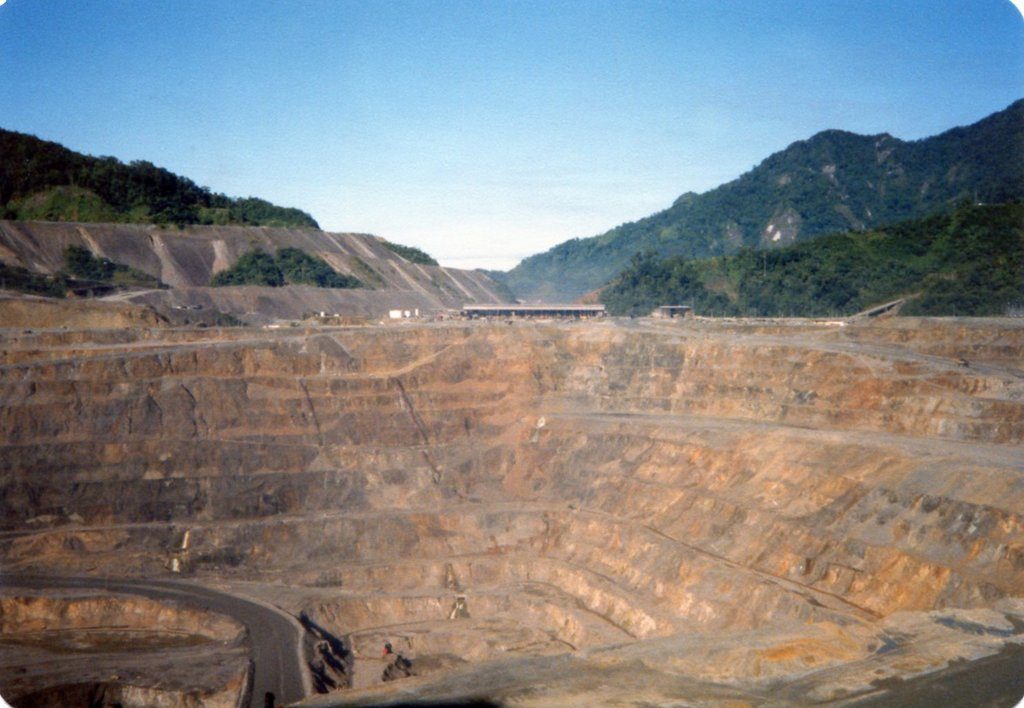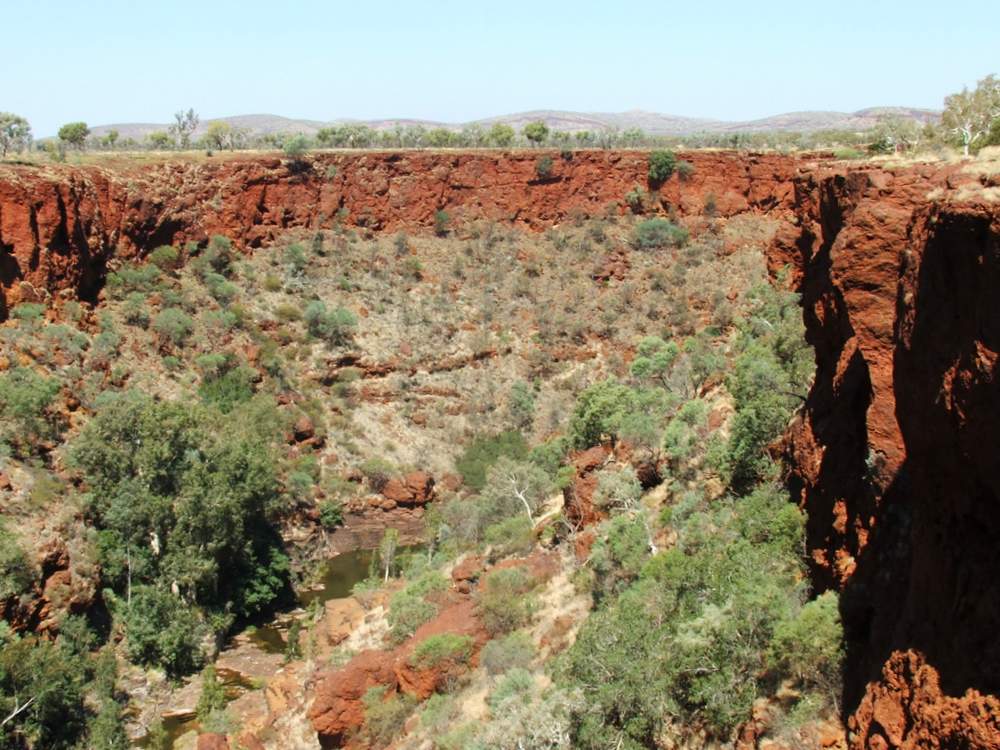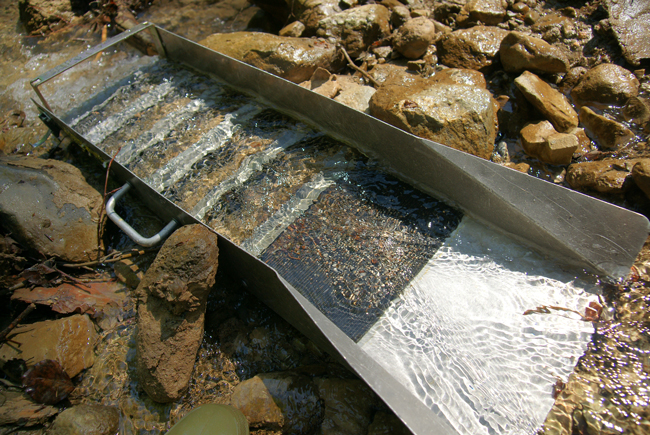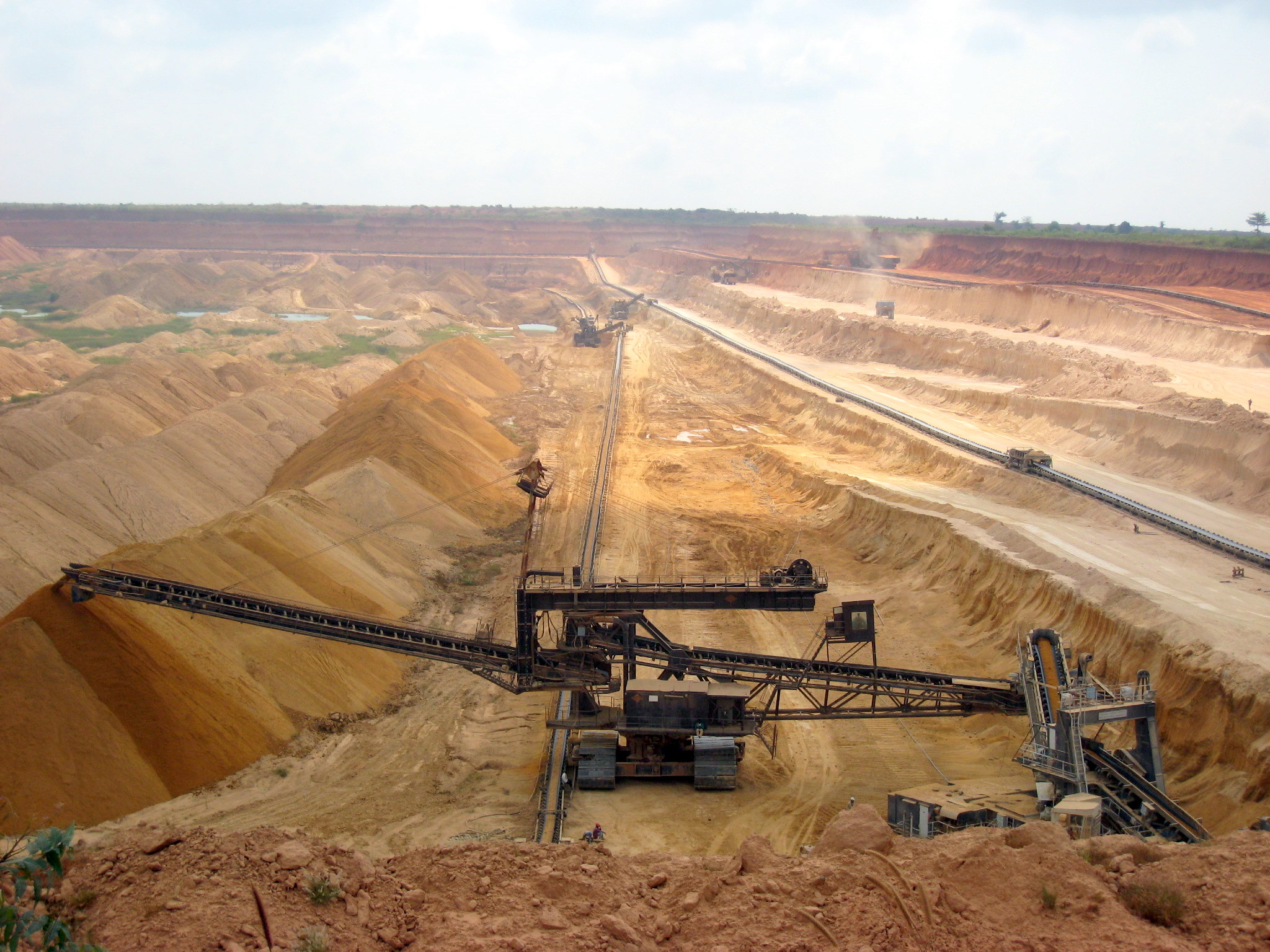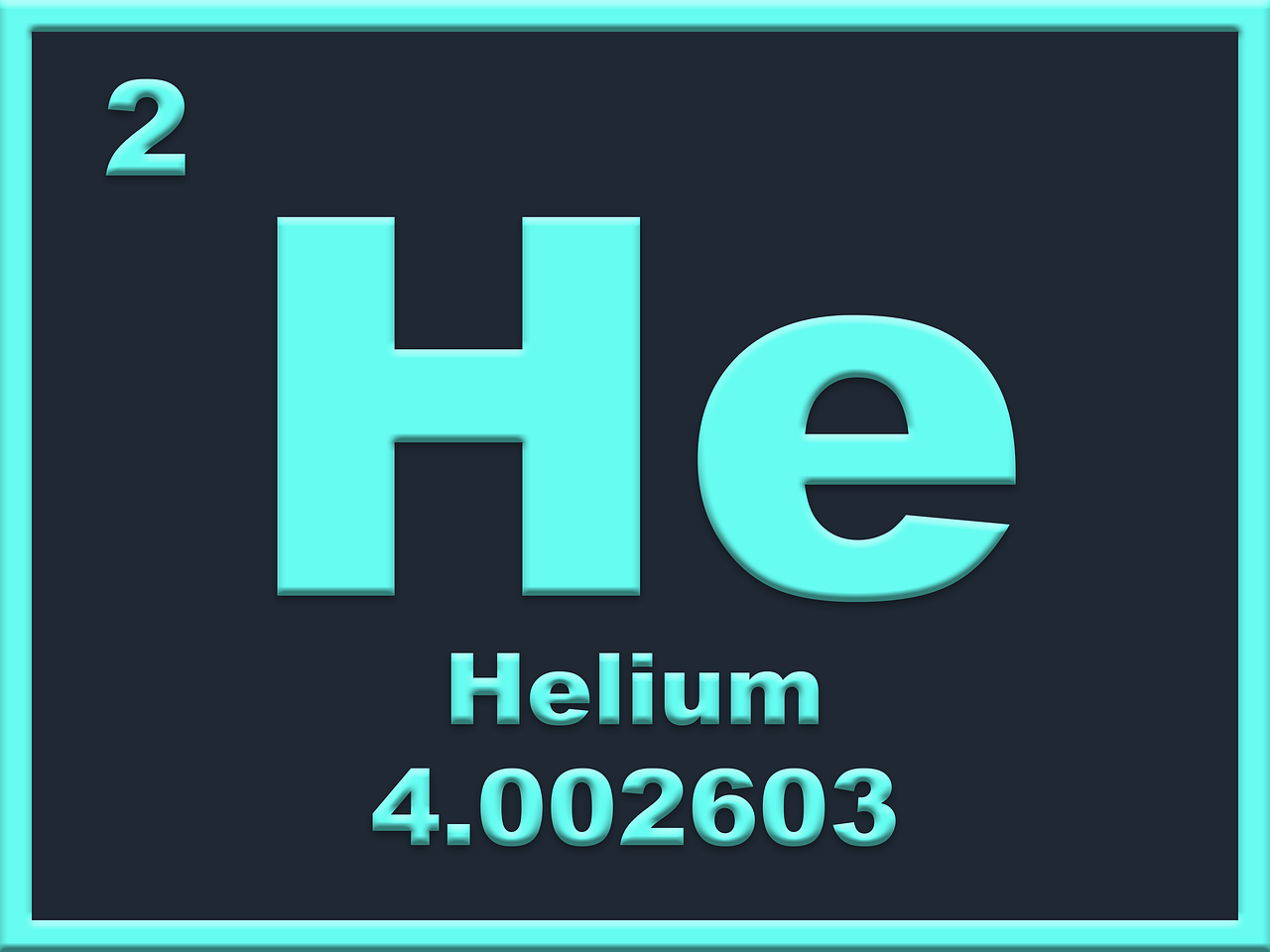Introduction
Komatiites (pronounced ko-ma-tee-ites) are an unusual and very ancient volcanic rock. They are interesting to geologists for their unique “spinifex” texture, their exceptional chemical composition and the high-temperature conditions of their formation. They are also host to a significant portion of world nickel production. With an eruption temperature of nearly 1600 °C, komatiitic magma was 400-500 °C hotter than that of the basaltic magma erupting from the active volcanoes today. It is believed that the predominance of the komatiites in the Archean (4.0 – 2.5 billion years ago) with minor occurrences in Proterozoic (2.5 – 0.54 billion years ago) and a few in Phanerozoic (0.54 billion years ago to present) is associated with the progressive cooling of the Earth’s mantle. However, komatiite-hosted nickel deposits are found only in the Archean complexes of the Precambrian cratons: the Barberton greenstone belt (South Africa), the Abitibi Belt (Canada) and Kambalda (Western Australia). This article takes attempts to explain komatiite formation and characteristics, and to elucidate the economic importance of these rocks.
Occurrences and Associated Mineral Deposits
Komatiites are mantle-derived volcanic rocks typically occurring within Archean and Proterozoic sequences of metamorphosed volcanic and sedimentary rocks called greenstone belts. Accordingly, the term ‘komatiite’ is applied to rocks composed of >90% of mafic minerals (rich in magnesium and/or iron, like olivine, pyroxene and biotite), which are often present as large skeletal or dendritic crystals producing a texture called ‘spinifex’ (fig.1; spinifex texture). It is thought that the rapid cooling of komatiitic magma is responsible for development of this special texture.
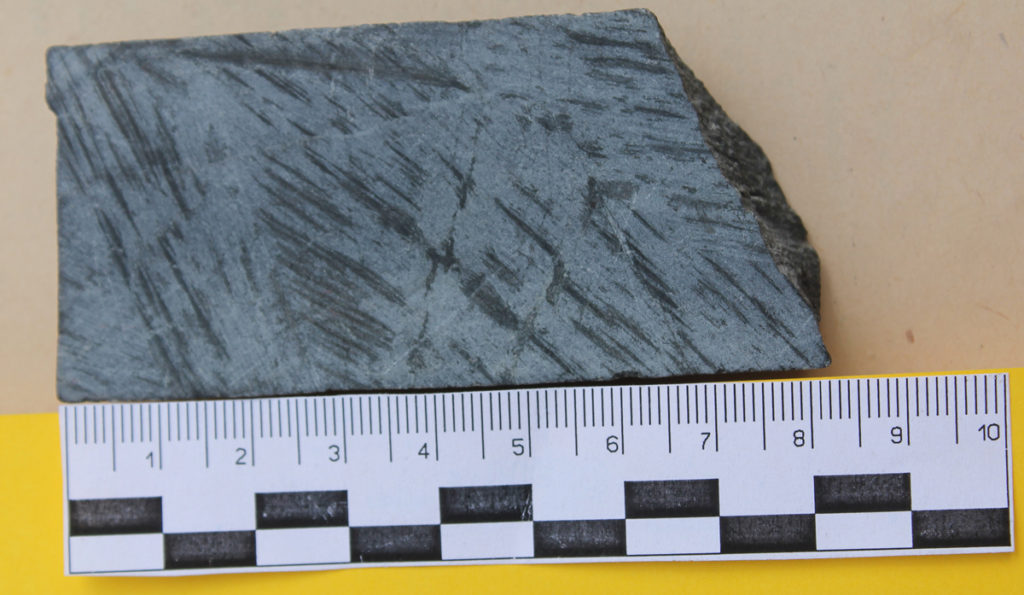
The type locality of the komatiites is at the same time the oldest one – Barberton greenstone belt, South Africa, where these rocks occupy nearly 25% of the lowest stratigraphic unit called Komati Formation. (Note: a “type locality” is the specific defining occurrence of a geologic formation, deposit or rock type.) There are no significant Ni-Cu-PGE deposits found within the komatiites of the Barberton belt, but they are indirectly associated with gold mineralization which appears at the contact between komatiites and the younger sedimentary rocks.
Nevertheless, komatiites account for about 10-14% of the world’s annual nickel production. After the discovery of the Kambalda deposit in the southern part of the Norseman–Wiluna belt, Western Australia komatiite-hosted sulfide deposits were divided into two principal types: Type 1, ores occur as massive sulfides at or near the basal contacts of the host komatiites in the channels created by the lava flows while Type 2 occur as disseminated sulfides in the olivine-rich komatiitic bodies called “cumulates”.
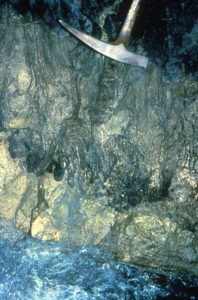
Type-1 Deposits: Massive Sulfides
Type 1 deposits are sulfide-rich accumulations of “massive” ore, containing 75-100% of the sulfides and/or the “matrix” ore, containing 30-70% of olivine crystals with dispersed sulfides. Rich massive ore (fig. 2) is normally overlain with less rich matrix ore, which is itself is overlain with low-grade sulfide layers.
These deposits typically occur at the contact surface between the underlying rock and the flowing lava of the molten komatiite. Hotter komatiitic magma melts S-rich underlying rocks (sedimentary and volcanic) to produce sulfide melt enriched in Ni-Cu-PGE which is accumulated at the depressions of the footwall rocks. The latter type of mineralisation is called ‘Kambalda-style’ and all the efforts of modern mineral exploration are aimed at finding the above mentioned basal contact. The orebodies at Kambalda deposit have an elongated linear shape with nearly 3 km in length, less than 5m in thickness and range from 0.5Mt to 10Mt in mass. Another great example of this deposit type is the smaller Alexo Fe-Ni-Cu deposit in northern Ontario. Here sulfides occur at the base of the komatiite sequence as massive lenses that range in thickness from a few centimetres to greater than 12m.
Type-2 Deposits: Disseminated Sulfides
Type 2 ores are also called “Mt Keith type” and occur as disseminated sulfides within lenses of olivine-rich komatiite units. This deposit type is fundamentally different from the type 1 deposits where the deposition of the sulfide ore occurs by physical transportation of sulfide melt to the depressions. In contrast, type 2 sulfides are moulded around the olivine crystals which indicates no mechanical transportation has occurred. These deposits may be found in units that contain type 1 ores, but not as a rule. Another difference lies in the Ni-rich nature of the sulfides in the type 2 ores which grade at about 0.6% of Ni. Moreover, Mt Keith (Norseman-Wiluna Greenstone belt, Western Australia) along with the neighbouring Yakabindie type 2 deposits account for about 60% of known Ni sulfide reserves in komatiites worldwide. Mt Keith is known to be the largest open cut mine in the world. The ore zone is within olivine-rich layer called MKD5 which has a broadly lenticular shape with a maximum thickness of nearly 200m.
Conclusion
Komatiites are exclusive ancient rock types which exhibit a unique spinifex texture. The Ni-Cu-PGE mineralisation generally occurs as massive sulfide ore at the floor of the komatiitic flow or as disseminated sulfides through olivine-rich layers. It is worth noting that the critical features whether the mineralisation will occur are the flow rate and more importantly the presence of a sulfur source in the underlying volcanic or sedimentary rocks.
Further Reading
- Arndt N. (2011) Komatiite. In: Gargaud M. et al. (eds) Encyclopedia of Astrobiology. Springer, Berlin, Heidelberg (Book)
- Arndt, N., Lesher, C., & Barnes, S. (2008). Komatiite. Cambridge: Cambridge University Press. (Book)
- Emplacement conditions of komatiite magmas from the 3.49 Ga Komati Formation, Barberton Greenstone Belt, South Africa (Academic article)
- A brief description of Kambalda nickel deposits (MINCOR resources article).

